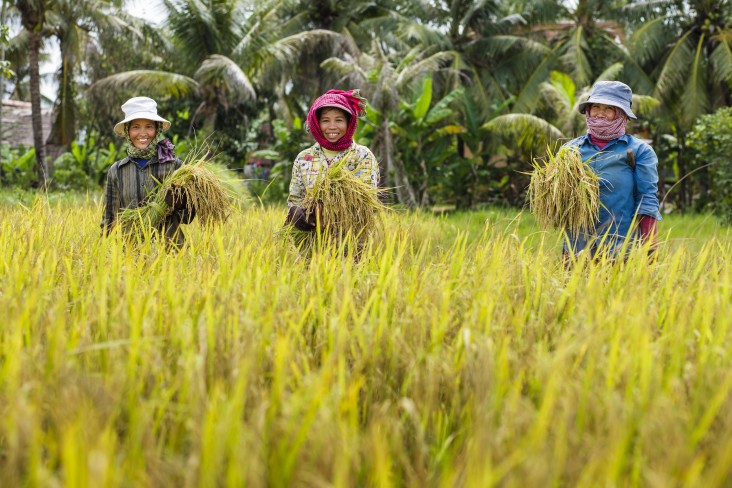Speeches Shim

Agriculture has the potential to be an engine for economic growth and food security in Cambodia, but the country must improve its production and post-harvest infrastructure, streamline the business environment, and increase capacity for financial services to reach rural entrepreneurs. Nearly 80 percent of Cambodians live in rural areas, and 65 percent rely on agriculture, fisheries, and forestry for their livelihoods. One-fifth of Cambodians are food deprived, which means they eat less than the minimum daily requirement of calories.
The Feed the Future program supports the Cambodian government’s development strategy by increasing the country’s agricultural productivity, improving the well-being of the rural poor, and promoting sustainable management of the country’s rich natural resources. The overriding objective is to support the achievement of Cambodia’s development goals, including halving the proportion of people who suffer from malnutrition and achieving the sustainable use of environmental resources. USAID is developing agricultural solutions to a variety of challenges, including access to finance, private sector engagement, postharvest losses, food safety, lack of market access, poor nutrition and sanitation, and environmental degradation. USAID is bringing together both the public and private sectors overcome these challenges.
RESULTS TO DATE
- Trained nearly 345,000 (64% female) persons or 124,500 households in agriculture and food security, 25% of them were poor
- Helped over 193,000 (53% Female) farmers or 78,000 households to apply new technologies on 87,600 hectares of land
- Assisted beneficiary farmers to increase their incremental sales by US$40 million (or each household has additional income of $110) from selling agriculture products each year
- Trained over 230,000 (70% Female) people in improving nutrition practices
- Helped 41,000 (50% girls) children under 5 years old to receive nutrition program
- Reduced nearly 30% of underweight children within the past 5 years
- Helped 73 (33 Female) students to pursue Associate, Bachelor, MSc and PhD degrees in agriculture, food security or environment related sectors
EXPECTED RESULTS BETWEEN 2017-2022
- Improving agriculture market system that will help at least 2,034 horticulture producer groups in Feed the Future zone of influence to generate an increase in sales by $37 million
- Working with private sector to leverage their investments in horticulture to reach at least by $12 million more
- Scaling up Rice Field Fisheries activities to reach at least 134 communities which will increase wild fish productivity by 588 metric tons per year (from 920 tons to 1,505 tons) to feed at least 338,000 people in the communities.
- Continuing working with mothers/care givers on nutrition to reach at least 129,700 children under five to escape from malnutrition.
- Improving access to drinking water for at least 100,000 people in 30 communities.


Comment
Make a general inquiry or suggest an improvement.